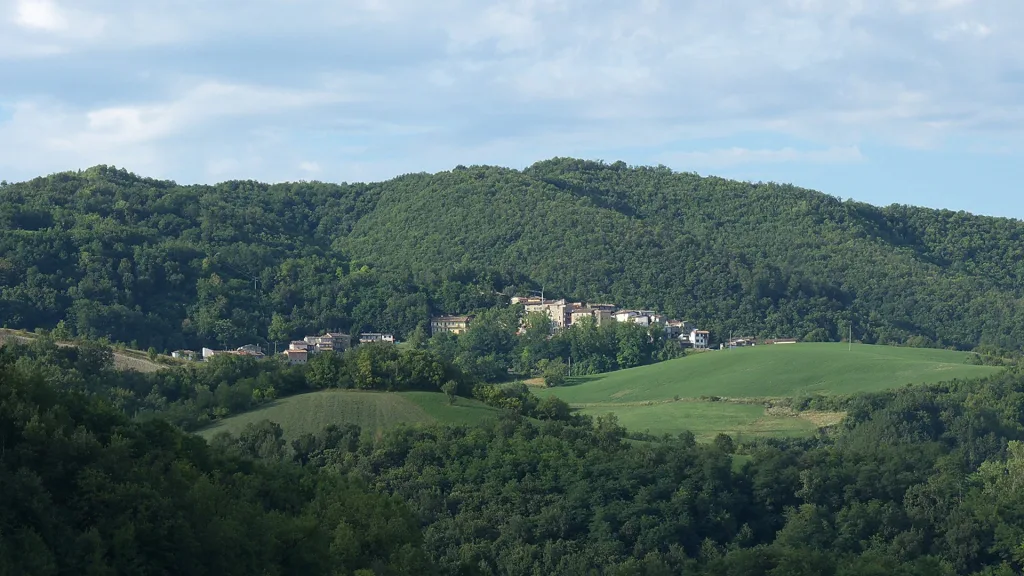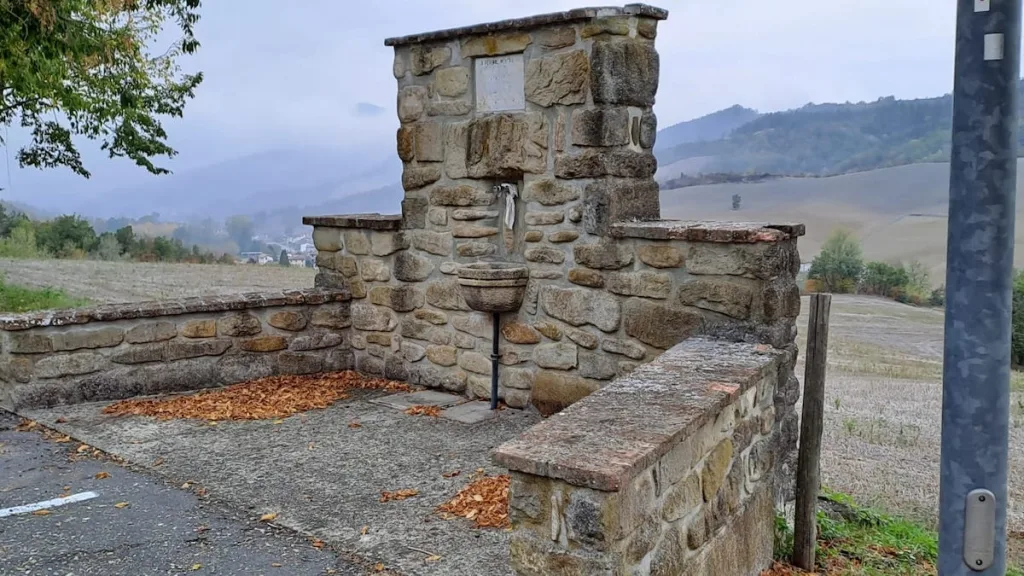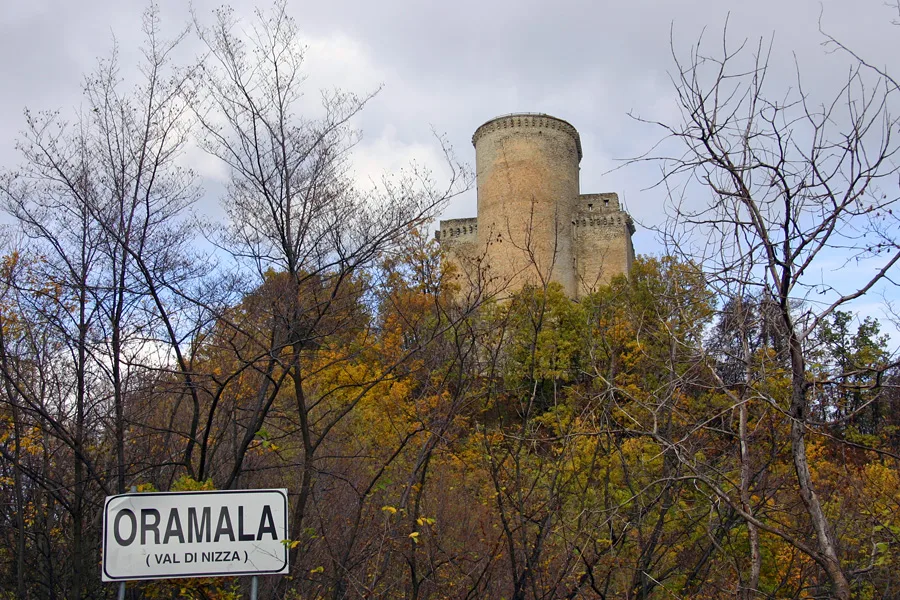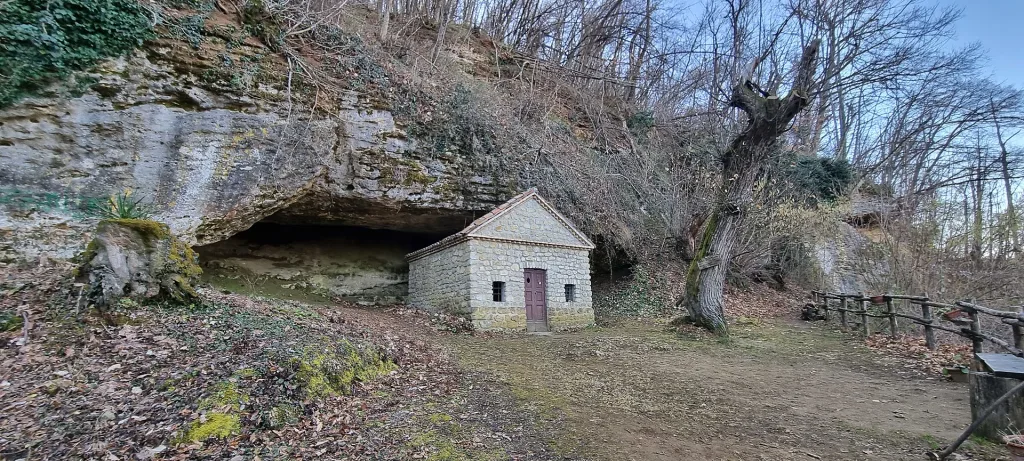Overlooking the Staffora valley is the ancient castle of Oramala, one of the most important fortresses of the Malaspina family, on which the history of Val di Nizzafocuses. A locality in the high hills of the Oltrepò Pavese, no one could ever imagine that it was here, for the first time in Italy, that Provençal songs resounded for ladies and knights.
The Malaspina castle
The centre of cultural life was the castle, built by the Malaspina family in the 10th century, then passed to the Este family, to the bishop of Tortona and then back to the Malaspina in the 12th century, who made it a splendid court of cultural dissemination, as well as the seat of one of the most powerful marquisates in northern Italy.
In the 17th century, the entire current municipality was included in the marquisate of Godiasco, one of the main separate jurisdictions of wide autonomy aggregated to the Oltrepò Pavese, run as a consortium by the many branches of the Malaspina lineage.

Historical evolution in Val di Nizza
There were three municipalities in the Val di Nizza territory: Val di Nizza, Oramala and Sant'Albano. These municipalities maintained their identity by surviving the abolition of feudalism in 1797. Joined with Bobbiese to the Kingdom of Sardinia in 1743, under the Treaty of Worms, Val di Nizza became part of the Province of Bobbio. However, during the Napoleonic period, from 1801 to 1814, the territory was annexed to Napoleonic France. During this domination, the political and administrative organisation underwent profound changes, with the introduction of new laws and institutions.
In 1817, the municipality of Oramala, which had lost its importance after the end of the Malaspina seigniory, was aggregated with Val di Nizza. In 1859, Val di Nizza became part of the Bobbio district of the new province of Pavia and thus of Lombardy. In 1923, the Bobbio district was dismembered and divided among several provinces, making Val di Nizza fall within the province of Pavia. Sant'Albano, which after the unification of Italy had taken the name Sant'Albano di Bobbio was suppressed and united with Val di Nizza in 1929.

Between castles, churches and even caves
Val di Nizza, nestled between chestnut forests and enveloped in the scents of hawthorn, is a place with a rich heritage to discover. Its seventeen hamlets tell ancient stories and offer a variety of attractions.
Among the municipality's most precious gems are two castles of great historical significance. The Castle of Oramala, which was a stately residence, and that of Casarasco dating back to the 9th century. Val di Nizza is also enriched by ancient churches and oratories, such as the church of San Paolo Apostolo and that of Sant'Albano in Candubrio.

The caves of San Ponzo
But the wonders do not end there. The Caves of San Ponzo are a real hidden treasure, a place where nature and spirituality come together. The caves were a refuge for San Ponzo, and even today are considered a place of pilgrimage.

A journey through nature, history and traditions
Val di Nizza, with its extraordinary combination of nature, history and traditions, offers a very interesting tourist experience. In addition to its breathtaking natural beauty, the municipality is steeped in history. Its ancient streets have witnessed the passing of civilisations, wars and events that have left an indelible imprint with visual testimonies that still tell the story of the past. But Val di Nizza is also made up of flavours and unique productions.
The Autumn Festival
Una delle occasioni più significative per vivere le tradizioni di Val di Nizza è la Festa d’Autunno, che si svolge nella prima metà di ottobre presso la frazione di Poggio Ferrato, un piccolo borgo medievale. Ogni anno i vicoli e le piazzette si animano per celebrare l’arrivo dell’autunno con una frequentatissima sagra gastronomica. Il programma prevede il classico mercatino di prodotti locali e artigianato, punti di ristoro e degustazione attivi per tutta la giornata con piatti che introducono alla nuova stagione: polenta, funghi, cinghiale, salsiccia, gorgonzola. Un mix di sapori tradizionali sublimato dalla tradizionale “schita”, la sottile focaccina fritta da apprezzare sola o accompagnata a salumi e formaggi. Da assaggiare anche la Pomella, un’antica varietà di mela alla quale è stata conferita la De.Co. (Denominazione di origine Comunale).








